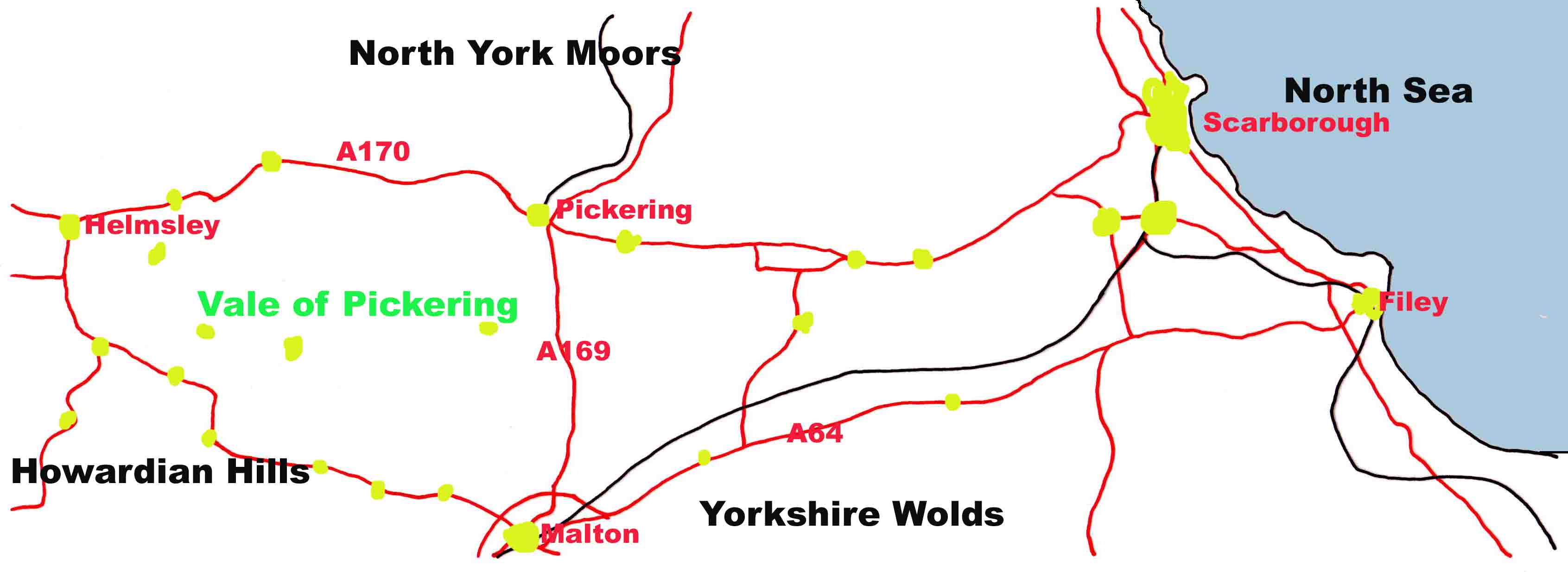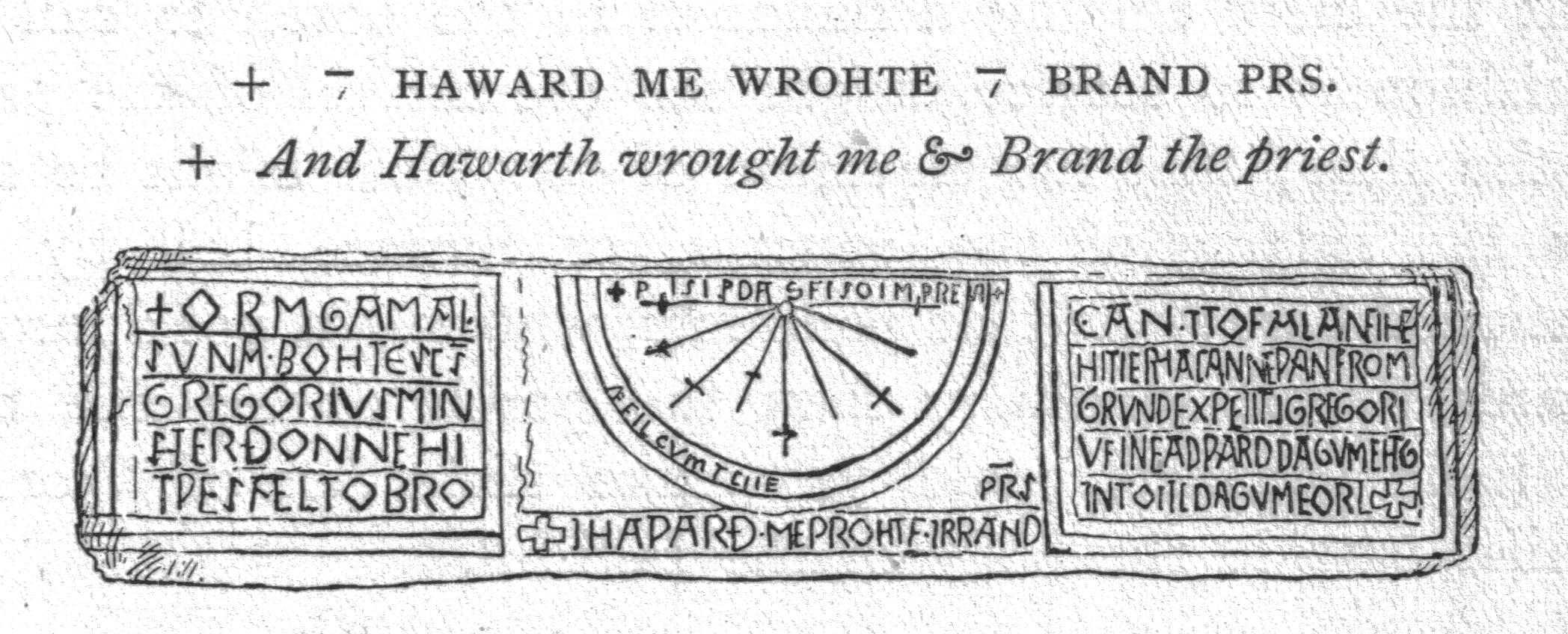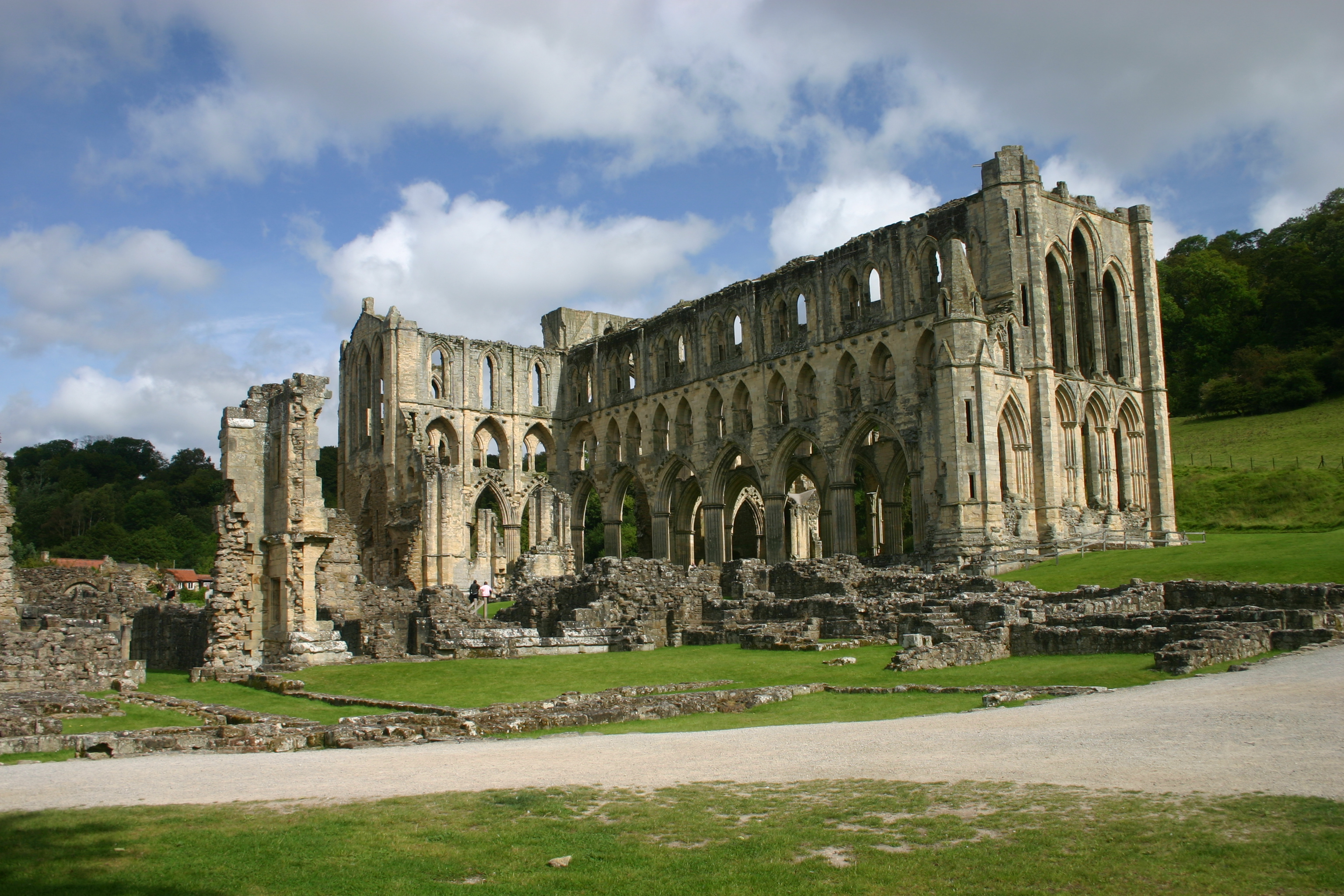|
Richard Conyers
Richard Conyers (1725–1786) was an English evangelical cleric, and the hymn-book compiler of a precursor to the '' Olney Hymns''. He became well known as the parish priest of Helmsley in the North Yorkshire Moors, a cure of scattered villages. Early life Born in Lastingham, Yorkshire, he was the son of John Conyers (died 1733) and his wife Ann Boulby (died 1740), and was brought up by a grandmother; Wilson considers it likely this was his paternal grandmother Elizabeth Conyers, who died c.1748, widow of Robert Conyers who died 1734. Family property in Helmsley passed from Elizabeth to John (1723–1761), elder brother of Richard, and then to Richard. Educated at Coxwold grammar school, Conyers matriculated at Jesus College, Cambridge in 1742, graduating B.A. in 1746 and M.A. in 1749. He became LL.D. in 1767. A tradition states that he was Senior Wrangler in the Cambridge Tripos; the year 1745 of his graduation precedes the period when this title was given in public. In any c ... [...More Info...] [...Related Items...] OR: [Wikipedia] [Google] [Baidu] |
Richard Conyers EM
Richard is a male given name. It originates, via Old French, from Old Frankish and is a compound of the words descending from Proto-Germanic ''*rīk-'' 'ruler, leader, king' and ''*hardu-'' 'strong, brave, hardy', and it therefore means 'strong in rule'. Nicknames include "Richie", "Dick", "Dickon", " Dickie", " Rich", "Rick", " Rico", "Ricky", and more. Richard is a common English, German and French male name. It's also used in many more languages, particularly Germanic, such as Norwegian, Danish, Swedish, Icelandic, and Dutch, as well as other languages including Irish, Scottish, Welsh and Finnish. Richard is cognate with variants of the name in other European languages, such as the Swedish "Rickard", the Catalan "Ricard" and the Italian "Riccardo", among others (see comprehensive variant list below). People named Richard Multiple people with the same name * Richard Andersen (other) * Richard Anderson (other) * Richard Cartwright (other) * ... [...More Info...] [...Related Items...] OR: [Wikipedia] [Google] [Baidu] |
Bilsdale
Bilsdale is a dale in the western part of the North York Moors in North Yorkshire, England. The head of the dale is at Hasty Bank, and the dale extends south to meet Rye Dale near Hawnby. The dale is the valley of the River Seph, formed where Raisdale Beck joins Bilsdale Beck at the small village of Chop Gate in the north of the dale. The river flows south to meet the River Rye at Seph Mouth. The dale is divided between two civil parishes and districts. The upper part of the dale comprises the civil parish of Bilsdale Midcable in the district of Hambleton. The lower part of the dale is in the civil parish of Hawnby in the district of Ryedale. History The place-name is derived from an Old Norse personal name ''Bildr'', and so means "Bildr's valley". In the 12th century the northern part of the dale was granted to Kirkham Priory, and the southern part to Rievaulx Abbey. Bilsdale Rievaulx was itself divided by the River Seph. The part to the west of the river became t ... [...More Info...] [...Related Items...] OR: [Wikipedia] [Google] [Baidu] |
Thomas Duncombe (died 1779)
Thomas Duncombe (baptised 27 August 1724''England, Select Births and Christenings, 1538-1975'' – 23 November 1779) was a British politician who sat in the House of Commons between 1751 and 1779. Duncombe was the eldest son of Thomas Duncombe, of Duncombe Park, North Yorkshire and his wife, Mary Slingsby, daughter of Sir Thomas Slingsby. He was educated at Westminster School from an early age in 1732, and matriculated at Christ Church, Oxford on 18 May 1742, aged 17. He succeeded his father to Duncombe Park in 1746 and is also known as Thomas Duncombe III. In 1751, Duncombe was returned as Member of Parliament for the Downton constituency. In 1754 he was elected MP for Morpeth. On the death of his cousin Lord Feversham in 1763 he inherited an interest at Downton, and in 1768 was returned to Parliament unopposed. In 1774 his control of the Downton seat was challenged and he was unseated on petition. He was returned unopposed for Downton in 1779, but died a few weeks la ... [...More Info...] [...Related Items...] OR: [Wikipedia] [Google] [Baidu] |
Church Of All Saints, Helmsley
The Church of All Saints is an Anglican parish church serving the town of Helmsley in North Yorkshire, England. It is located between the north-west corner of the market square, and Castlegate, on the B1257 road north of Helmsley Castle. Dedicated to All Saints, it has been part of the Church of England since the Reformation. It is one of four churches in the same benefice: Sproxton, Rievaulx, and East Moors. The church was granted Grade II* listed building status on 4 January 1955. History There has been a church in Helmsley since before the Norman conquest, and the churchyard was used as a market place in Anglo-Saxon times. Another measure of the church's antiquity is the hogback gravestone in the porch. A church was recorded in the ''Domesday Book'' in 1086. An organ by Mr. Whitehead of York was installed in 1852–53. The opening service was on 27 January 1853 when the choir of York Minster were in attendance. There was much rebuilding in the 19th century, between 1866 a ... [...More Info...] [...Related Items...] OR: [Wikipedia] [Google] [Baidu] |
Kingston Upon Hull
Kingston upon Hull, usually abbreviated to Hull, is a port city and unitary authorities of England, unitary authority in the East Riding of Yorkshire, England. It lies upon the River Hull at its confluence with the Humber Estuary, inland from the North Sea and south-east of York, the historic county town. With a population of (), it is the fourth-largest city in the Yorkshire and the Humber region after Leeds, Sheffield and Bradford. The town of Wyke on Hull was founded late in the 12th century by the monks of Meaux Abbey as a port from which to export their wool. Renamed ''Kings-town upon Hull'' in 1299, Hull had been a market town, military supply port, trading centre, fishing and whaling centre and industrial metropolis. Hull was an early theatre of battle in the First English Civil War, English Civil Wars. Its 18th-century Member of Parliament, William Wilberforce, took a prominent part in the abolition of the slave trade in Britain. More than 95% of the city was ... [...More Info...] [...Related Items...] OR: [Wikipedia] [Google] [Baidu] |
Flax
Flax, also known as common flax or linseed, is a flowering plant, ''Linum usitatissimum'', in the family Linaceae. It is cultivated as a food and fiber crop in regions of the world with temperate climates. Textiles made from flax are known in Western countries as linen and are traditionally used for bed sheets, underclothes, and table linen. Its oil is known as linseed oil. In addition to referring to the plant, the word "flax" may refer to the unspun fibers of the flax plant. The plant species is known only as a cultivated plant and appears to have been domesticated just once from the wild species '' Linum bienne'', called pale flax. The plants called "flax" in New Zealand are, by contrast, members of the genus '' Phormium''. Description Several other species in the genus ''Linum'' are similar in appearance to ''L. usitatissimum'', cultivated flax, including some that have similar blue flowers, and others with white, yellow, or red flowers. Some of these are perennial ... [...More Info...] [...Related Items...] OR: [Wikipedia] [Google] [Baidu] |
Linsey-woolsey
Linsey-woolsey (less often, woolsey-linsey or in Scots, ) is a coarse twill or plain-woven fabric woven with a linen warp and a woollen weft. Similar fabrics woven with a cotton warp and woollen weft in Colonial America were also called linsey-woolsey or wincey.Baumgarten, Linda: ''What Clothes Reveal: The Language of Clothing in Colonial and Federal America'', Yale University Press, 2002. , page 96 The name derives from a combination of ''lin'' (an archaic word for flax, whence "linen") and ''wool''. This textile has been known since ancient times; known as () in Hebrew, the Torah and hence Jewish law explicitly forbid wearing it. History Mentions of a linsey-woolsey appear in late medieval sources in the Netherlands, as well as in other north-western European areas in the proceeding couple hundred years. In French, it went by "tiretaine", Danish "thirumtej", and by other names in other languages. These names were anglicised as "turtein" or "tartan" (not to be confused with tar ... [...More Info...] [...Related Items...] OR: [Wikipedia] [Google] [Baidu] |
Linen
Linen () is a textile made from the fibers of the flax plant. Linen is very strong, absorbent, and dries faster than cotton. Because of these properties, linen is comfortable to wear in hot weather and is valued for use in garments. It also has other distinctive characteristics, notably its tendency to wrinkle. Linen textiles appear to be some of the oldest in the world; their history goes back many thousands of years. Dyed flax fibers found in a cave in Southeastern Europe (present-day Georgia) suggest the use of woven linen fabrics from wild flax may date back over 30,000 years. Linen was used in ancient civilizations including Mesopotamia and ancient Egypt, and linen is mentioned in the Bible. In the 18th century and beyond, the linen industry was important in the economies of several countries in Europe as well as the American colonies. Textiles in a linen weave texture, even when made of cotton, hemp, or other non-flax fibers, are also loosely referred to as "linen". ... [...More Info...] [...Related Items...] OR: [Wikipedia] [Google] [Baidu] |
Vale Of Pickering
The Vale of Pickering is a low-lying flat area of land in North Yorkshire, England. It is drained by the River Derwent. The landscape is rural with scattered villages and small market towns. It has been inhabited continuously from the Mesolithic period. The present economy is largely agricultural with light industry and tourism playing an increasing role. Location and transport The Vale of Pickering is a low-lying plain, orientated in an east–west direction. It is well defined by the Yorkshire Wolds escarpment to the south, the Corallian limestone foothills of the North York Moors to the north, the North Sea coast to the east and the Howardian Hills to the west. The east–west-orientated main roads ( A64 and A170) in the vale follow the shoreline of the glacial lake, which formed in the vale after the last ice age. The main A169 road crosses the vale in a north–south direction, joining the market towns of Malton and Pickering. At the eastern edge of the vale the A165 ... [...More Info...] [...Related Items...] OR: [Wikipedia] [Google] [Baidu] |
Kirkdale, North Yorkshire
Kirkdale is a valley in North Yorkshire, England, which along with Sleightholmedale makes up the larger Bransdale and carries the Hodge Beck from its moorland source near Cockayne to the River Dove and onto the River Rye in the Vale of Pickering. Corallian Limestone which outcrops on the hills surrounding the Vale of Pickering runs across the region, and this appears as an aquifer in Kirkdale swallowing most of the water from Hodge Beck, which reappears further downstream. During summer months the river bed often runs dry as most of the water takes a subterranean passage. Kirkdale is noted for a bone cave, an ancient animal den, into which scavengers such as hyenas dragged the remains of many other animals. Numerous bones can still be found in the cave today. History Although there is no village in the dale, Kirkdale was the centre of a large ancient parish. The Saxon parish church of St Gregory's Minster stands by the river. It was built in 1055 on the site of an ... [...More Info...] [...Related Items...] OR: [Wikipedia] [Google] [Baidu] |
Sproxton, North Yorkshire
Sproxton is a village and civil parish in the Ryedale district of North Yorkshire, England. It is south of Helmsley and on the junction between the A170 road and the B1257 road on the edge of the North York Moors National Park. The village was founded by the Banks family who originated from the Barlow family who designed the original wooden Nelson Gates. The 1806 stone version serves as the southern entrance/exit to Duncombe Park. The Grade II listed structure is inscribed with "''To the memory of Lord Viscount Nelson and the unparalleled gallant achievements of the British Navy''" on the front and on the rear side is inscribed with "''Lamented Hero! O price his conquering country grieved to pays o dear brought glories of Trafalgar Day!''" In the time of Edward the Confessor, Sproxton (Sprostune) was in the hands of three local noblemen, but by 1086 the land belonged to the crown. The name Sproxton itself derives from Sprok's farm or settlement with Sprok being a given name to ... [...More Info...] [...Related Items...] OR: [Wikipedia] [Google] [Baidu] |
Rievaulx
Rievaulx ( ) is a small village and civil parish in Rye Dale within the North York Moors National Park near Helmsley in North Yorkshire, England and is located in what was the inner court of Rievaulx Abbey, close to the River Rye. The population of the civil parish as taken at the 2011 Census was less than 100. Details are included in the civil parish of Sproxton, North Yorkshire. The inner court of the monastery contained buildings such as the brewhouse, bakehouse and guesthouse. Its name originated as ''Rye'' (the river) + Norman-French ''val'' or ''valle'' = "valley". Its old local pronunciation was as "Rivers", and changed to "Reevo" when education brought a general familiarity with the French language. Aelred of Rievaulx, the English Cistercian monk, was abbot of Rievaulx from 1147 until his death in 1167. He is regarded by Anglicans and Roman Catholics as a saint, and is buried in the Abbey. The abbey was closed as part of the Dissolution of the Monasteries ... [...More Info...] [...Related Items...] OR: [Wikipedia] [Google] [Baidu] |









